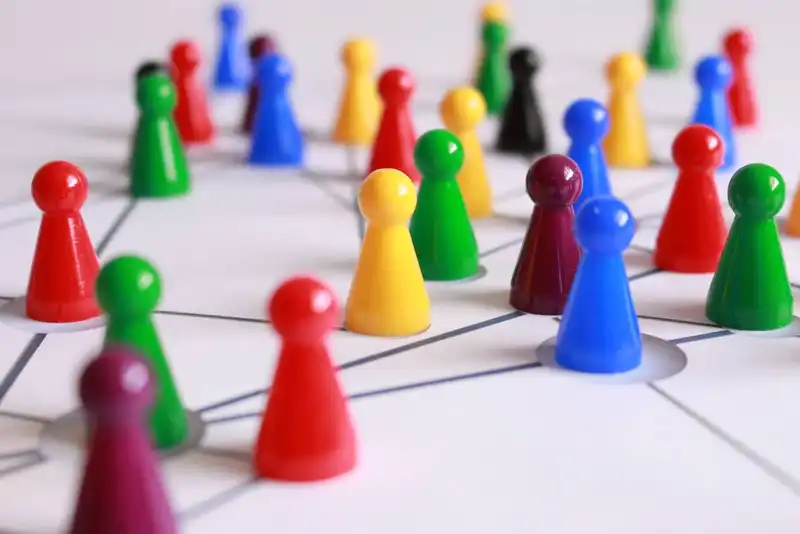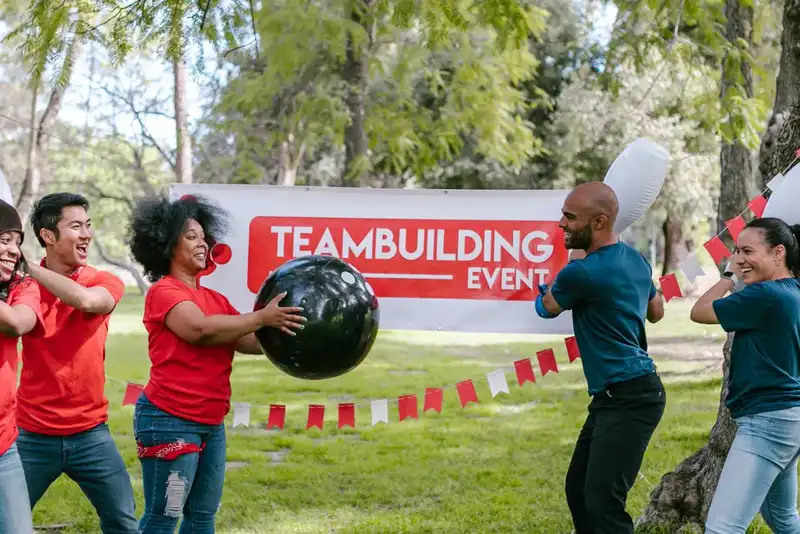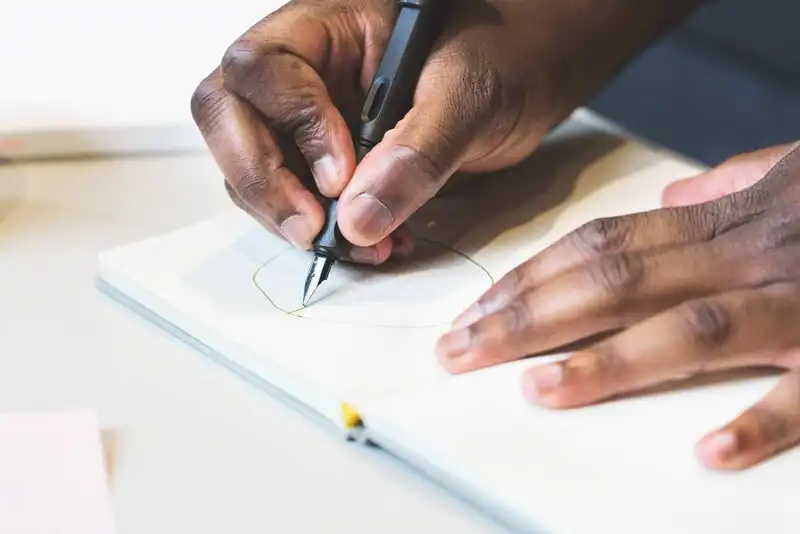Build a Better Understanding of Team Building
Introduction to Team Building
Small businesses and franchisees are powered by employees with different skills, experiences, and values. Through team building programs, entrepreneurs can bring together these individuals and create a cohesive and united group. These practices are becoming significantly important with the rise of the remote workspace. This is in response to the COVID-19 pandemic, in which more teams are working in silos. Therefore, 2500% more organizations globally are investing in online team building.
What is Team Building?
Team building is the process of cultivating and amplifying bonds between individuals in a group. This includes structured activities, after-work events, training exercises, and daily meetings. The process emphasizes identifying common goals and working together to achieve them. Effective activities for team building will help companies foster collaboration, cohesiveness, and respect between employees. Small businesses and large-scale organizations can benefit from team building because it ensures employees share the same spirit and motivation.
For example, restaurants have multiple teams within their establishment - the front of house and back of house staff. Operators can have team building events for each individual group, as well as for the entire business. This will help employees create team norms and set up appropriate interactions. In turn, management can ensure seamless workflows and minimize conflicts.
The Importance of Team Building
Team building has noteworthy value on a business's growth and success. According to statistics, 54% of employees state that a strong sense of community drives them to stay with a company longer. This means creating collaboration among staff members will reduce turnover and boost retention. In the long run, this is a financial benefit because employers can avoid investing in recruiting, onboarding, and training new hires.
Cultivating team bonding is also important because it helps build trust between employees. Increasing reliability will enhance morale and engagement, as well as performance. Out-of-office team building activities will also allow staffers to see each other in a new setting. This will help them connect personally through their hobbies and outside interests. Creating work relationships in this way will de-stress and enrich the company culture.
6 Reasons for Team Building

There are many reasons why business managers and operators should invest in team building activities and events. For example, studies found that socialization between employees improved communications patterns by more than 50%. Through informal conversations, teams can gain better insight on how to communicate with one another and how to convey information. Other reasons for holding team building exercises include the following.
1. Learn About One Another and Network
Informal work gatherings allow for socializing and enable employees to make friends within the company. They can connect through common interests, career goals, and hobbies. This helps boost morale, as staff members will be encouraged and motivated to go to work to see their colleagues. Building relationships among remote teams is especially important because they will feel connected to the company despite not being on-site.
2. Improve Team Performance
Team bonding activities will teach employees how to work as a team and improve their performance together. These exercises will help them better understand each others' strengths and values. They can use this knowledge when they work together on work-related projects and tasks. It also helps create trust and support within teams, in turn fostering a positive environment where success can easily thrive.
3. Create Healthy Competition

Healthy and respectful competition within a company can boost overall productivity and output capacity. Managers can promote incentives to boost team spirit and drive employees to collaborate. This can generate an exciting and enjoyable environment, in which staffers are motivated to achieve shared goals.
4. Boost Drive and Workflows
When individuals are happy with their coworkers and enjoy being in each others' presence, workflows will be seamless. Since they know how to cooperate with one another, there will be less conflict or delays in their work. For example, if kitchen staff can cooperate effectively with waiters, customers will be served efficiently.
5. Stimulate Creativity and Innovative Ideas
A collaborative and team-focused work environment can stimulate creative and innovative business ideas. When employees are in a comfortable and supportive space, they are more likely to share their inventive strategies. These suggestions and proposals can help bring brands to another level of success.
6. Enhance Relationships and Communication
Team building will help employees and employers foster supportive and transparent relationships. Subsequently, staff members will feel more comfortable communicating their concerns, opinions, and questions with each other and to their superiors. Therefore, having such openness within a business will enable owners to improve their management and overall operations.
Successful Team Building Activities

Despite their effectiveness, team building exercises may appear awkward for some individuals. However, there are many exercises that businesses can use to help employees break out of their shells and participate. The following are some of the best team bonding activities that people will enjoy and engage with.
1. Common Ground
This is a straightforward activity that helps teams find a common ground based on their shared goals and values. For this task, all members of a team must write down what matters to them on a piece of paper. This can be in regards to a project, their career at the company, or what they want from the brand. Afterward, each individual will share what they wrote to the group, with one leader writing the terms or phrases that were mentioned multiple times. Once everyone has had their turn sharing, they should review the popular words and discuss their importance.
2. Commemoration of Victories
If employees are all working in the office, there can be a dedicated space or wall for a commemoration of victories. Teams can meet each week or month and draw or write about their accomplishment for the given period. This can be big or small achievements, such as securing a high-value client or finishing a task in one day. Each member should then present their memories and tape them onto a board or wall. Through this activity, employees can celebrate their accomplishments, as well as build camaraderie and support for one another.
3. Pitch an Idea

When a business needs creative projects and new plans, management should get their teams together to pitch ideas. There can be multiple groups of people with 2-7 participants in each. All teams will have a certain amount of time to brainstorm innovative and unconventional pitches for products, campaigns, or processes. Managers should include an incentive so that staff will be motivated and competitive to have the best idea. This exercise will promote creativity, as well as teamwork and collaboration.
4. Trivia Bowl
Trivia games are a great way for employees to share their knowledge and engage with their coworkers. This activity can be done anywhere, from in the office, through Zoom, or at a restaurant. To boost competitiveness, employees can be split into opposing teams. Questions can range from office-related quizzes, like How many people are in the Marketing department? Or it can be about facts, history, or popular culture.
5. 2 Truths and 1 Lie
This is a common team building game that helps break the ice between employees. To do the exercise, each person must say 1 lie about themselves and 2 truths. Other team members will then determine which statement is the lie. This practice can oftentimes be humorous, as individuals will come up with imaginative and funny descriptions about themselves. It will also help the team better understand each other personally beyond the boundaries of work.
6. Draw By Command

For this activity, a person will draw an object without knowing what it is prior, as their team members relay verbal instructions. This exercise focuses on effective delegation, in which the group must choose the right person to draw. It also emphasizes efficient and thorough communication and teamwork.
7. One Whole Bridge
This task entails more than one team creating bridges out of materials, such as straw, cardboard, or paper. After, the different teams must connect their bridges together to create one whole bridge. The activity helps individuals be creative with design and problem solving. It also promotes communication and collaboration.
8. Coat of Arms
This team building activity is great for big and small groups. Members must come together and design an emblem or badge to represent their team. This can be based on their goals, achievements, or interests. For example, a restaurant's front of house team can have a handshake symbol to demonstrate their goals in customer service. Whereas, the back of house staff can share a whisk symbol to represent their drive for food quality.
Establishing a coat of arms for each team will help foster a cohesive and shared identity among the staff. It also helps employees find solidarity in their values and interests. Businesses can then use these emblems and stitch them on uniforms or create pins that employees can wear while on the job.
5 Ways to Create More Collaborative Teams With Team Building

Team building contributes to collaboration because employees will become more comfortable working together. It also helps establish support and trust between individuals, which will help communication. Per reports, 75% of employees find collaboration and teamwork important. In fact, a Gallup study found that connected teams also boosted profitability by 21% and decreased absenteeism by 41%. Businesses can build more collaborative teams by using the following best practices.
1. Full Support from Executives and Management
Managers and executive leaders that invest in team building will help create connected employees. Senior-level management must show support in employees creating social relationships. They can do this by promoting or hosting events and offering incentives for engaging with the company. For example, a restaurant manager can hold a company-wide picnic and have a raffle at the end of the festivity.
Executives can also create a sense of community within their offices or warehouses. They can reserve a space, such as a coffee bar, for employees to meet and chat during their breaks. The business can also fund free gym memberships for employees. This will allow staff to enjoy the amenities with their coworkers after their shift.
2. Promote A Sense of Community
The human resources (HR) department can help promote a sense of community in the workplace by training employees on effective communication. HR representatives should adopt practices that focus on community building and teamwork. They should also emphasize conflict resolution and project management. By training staff members on these skills, team performance and engagement will enhance.
3. Select the Right Team Leaders

Team leaders should have skills for building healthy relationships and ensuring tasks are completed in a quick manner. Leaders that are communicative and great at delegation can be role models for employees. They will drive staff to collaborate and work productively with the entire team.
4. Clearly Define Roles and Tasks
Members of a team can successfully work and achieve goals when they have a clear understanding of their roles and tasks. This clarity will prevent employees from making mistakes, delaying the team, and having conflicts. By establishing standards and expectations from the beginning, team members can focus their time and energy on their job. This means the team can effectively work together and achieve their work objectives.
5. Keep Promises
To ensure teams are collaborative, managers and leaders must keep their promises. Trust is important in business relationships and is the main component that drives employees to follow through with their tasks. For example, if managers state that they will compensate their staff for the completion of a project, they must honor this statement. Otherwise, employees will feel unvalued and unmotivated in working towards business goals in the future.
Conclusion to Team Building
- Team building is the process of cultivating a mutual bond and cohesive partnership among individuals in a group.
- Businesses must invest in team building because it helps improve work culture, employee morale, and productivity. Additionally, as more companies are employing virtual teams, these practices will help reduce silos.
- Managers can promote collaboration and unity among employees by hosting activities, such as playing trivia and commemorating achievements.
- Businesses can also build more collaborative teams structurally by having HR training programs and keeping promises.






